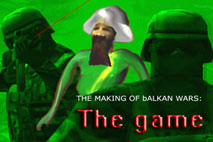Web 2.0 Wants You






The virtual environments, the social networks and the multiple ways of connecting through the world wide web, form today a special territory of controversies and claims within which the new online forms of subjectivities are created. Time, energy and the capacities of the users – producers, are the main elements that are being used for the production of cultural, political and educational features of the “user – generated- content” based social media of the web 2.0. But, how conscious are the users of these networks for the content they form, or else, do they really want to become conscious?
As Paolo Virno claims, the multitude – like the proletariat beforehand – is not a souvenir photo but a continuous struggle for constitution. It encompasses at the same time, loss and salvation, assent and collision, subservience and freedom. Its main element, its distinctive feature, common feeling in other words of the multitude, is the feeling of “not feeling at home”. And those, who do not feel at home to orientate themselves and find shelter, they have to seek, to find or invent and to use some new common places. These common places cannot be natural locations anymore; there is no inside and outside anymore; in the process of capitalization geography more and more collapses. Consequently, the new common places can only constitute new categories of a linguistic production of symbols and notions that are constantly being created and through which the management of things and facts are being perceived as the world itself.
The common places are many and are under continuous transformation. They could be seen as linguistic systems of communication, varying from the simplest ones as those that are formed by phone networks, TV networks, to the most complex social network systems and the 3D online virtual worlds of the web2.0
But what are in reality those common places being formed and forming the web2.0? What are the features of the relationships between the users or between the owners and the users of the network places that are being created by the users? At the very end, which of the features that Virno refers do they promote? Subservience or freedom? Assent or collision? And why?
Juan Martin Prada believes that it looks merely impossible to doubt that in a network society, the possibility of an effective political resistance can only be reached by the appropriation and recognition of the freedom capacity only some of biopolitical principles have, those of affection, collaboration and friendship. The new resistance wishes to save them from the appropriation of the corporations. And, it needs to be made clear through this resistance, that these principles encompass the power to form new groupings, new communities that could respectively create an active well built frame of the principle of the common. Maybe the artistic production – we shall remember that the aesthetic experience is purely emotional – is one of the best means to attempt this rescue.
Mediators: Daphne Dragona, Ilias Marmaras
Personal Cinema & the Erasers (GR)
Folded- in
2008
www.foldedin.net
Nils Andres - Brand Science Institute, CEO (DE)
Hatebook
2007
www.hatebook.org
Wayne Clements (UK)
Logo_wiki
2007
www.in-vacua.com/logo_wiki.html
Second Front (Second Life)
Grand Theft Avatar
2008
http://www.secondfront.org/blog/
UBERMORGEN.COM (AT/ CH/ US)
The EKMRZ-trilogy
2005-09
1. GWEI - Google Will Eat Itself
2005-08
Paolo Cirio (IT),
Alessandro Ludovico (IT)
www.gwei.org
2. Amazon Noir - The Big Book Crime
2006-07
Paolo Cirio (IT),
Alessandro Ludovico (IT)
www.amazon-noir.com
3. The Sound of eBay
UBERMORGEN.COM
2008-09
Web 2.0 Wants U @ "MELINA" CULTURAL
12 – 20 September 2008
http://www.mirfestival.gr





0 Comments:
Post a Comment
Subscribe to Post Comments [Atom]
<< Home